Debris
As I’ve discussed in previous reviews , horror is a genre I want to like more than I do. Some of my favourite games in this series have been horror games, but so have some of my least favourite . When it works, there is nothing quite like it. The sense of fear, of following this character, of falling into the same pits and traps is incomparable. When it goes wrong, though, it becomes laughably bad in a way that makes it completely unfun. It’s a tricky balance to strike, and there is rarely a game that falls between the two extremes. When I see a horror game coming up in my list, I always brace myself, ready for either disappointment or exhilaration, but nothing in between.
Debris doesn’t market itself as a horror game, but that doesn’t mean it isn’t one. It may not have gore or jump scares, but it does have the slow, creeping sensation of time running out, and never knowing what lurks in the dark just beyond. It taps hard into the genre to try to develop a sense of atmosphere and mystery, and so I feel confident lumping it in with the horror games I’ve played. It’s also a big part of the reason why I’m disappointed with it. It cribs on the tropes of the genre ineffectively, and in so doing, undermines its entire construction as a game.
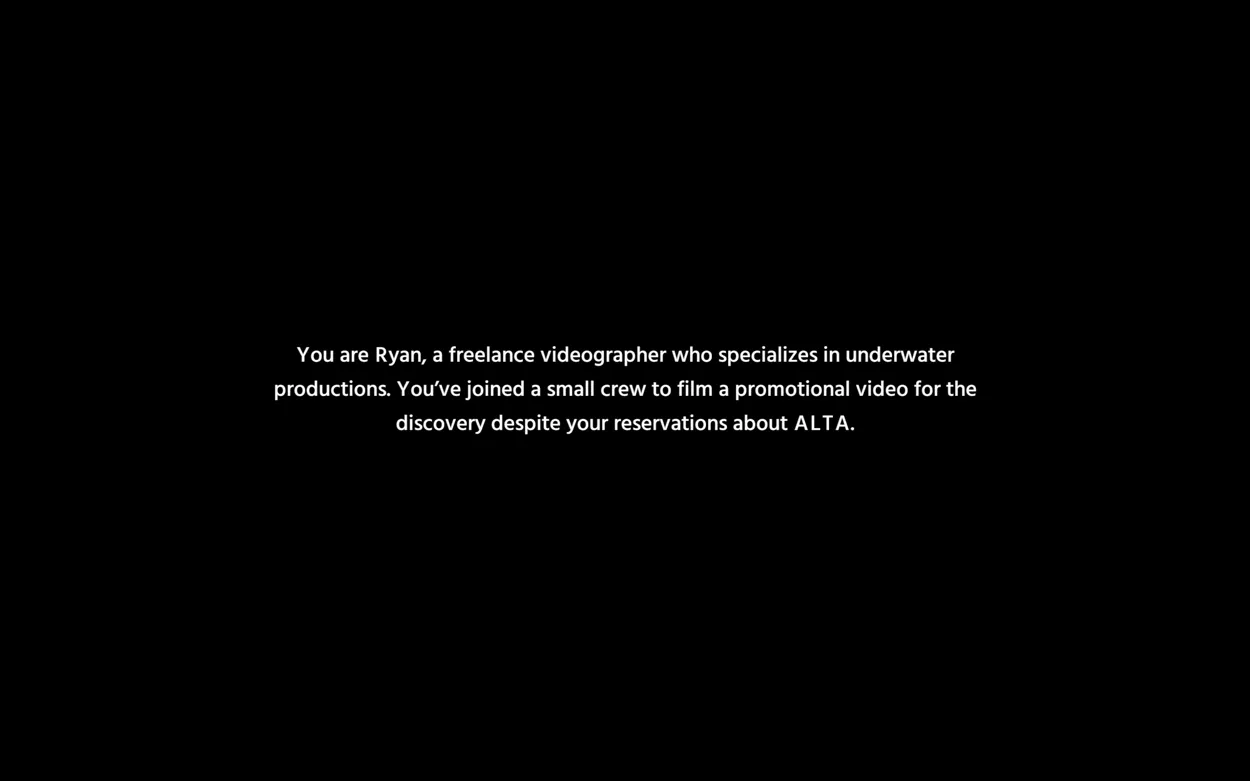 Hi Ryan.
Hi Ryan.
From the outset, Debris focuses on creating a sense of atmosphere and intrigue, expecting that sense of mystery to propel the player forward as they navigate through obstacles and dodge hazards. The game opens with the player getting caught in a maze of collapsed rock and thawing ice, and doesn’t let up with the darkness and sense of being trapped. The game itself does a reasonably good job building that atmosphere, with the timer counting down oxygen serving as a constant reminder of how tenuous Ryan’s connection to life actually is, and what the stakes are as he explores the cave system. Its snippets of dialogue further build the mystery, forcing the player to think more deeply about their surroundings, and the effect mining has had on the environment around them.
User tags for Debris on Steam label this as a walking simulator, and while that label is incorrect - there’s too much actual gameplay for me to classify this as a walking simulator - I can understand why it’s been attached to this game. While there are side passages to explore, much of the game is linear, with Ryan moving from obstacle-laden cavern to obstacle-laden cavern. There is a path to the surface. He will follow that path. Along the way, the sound and visual design of the world do a good job furthering that sense of obstacle, filling the player’s ears with odd thumps and clicks, and creating a general sense of unease.
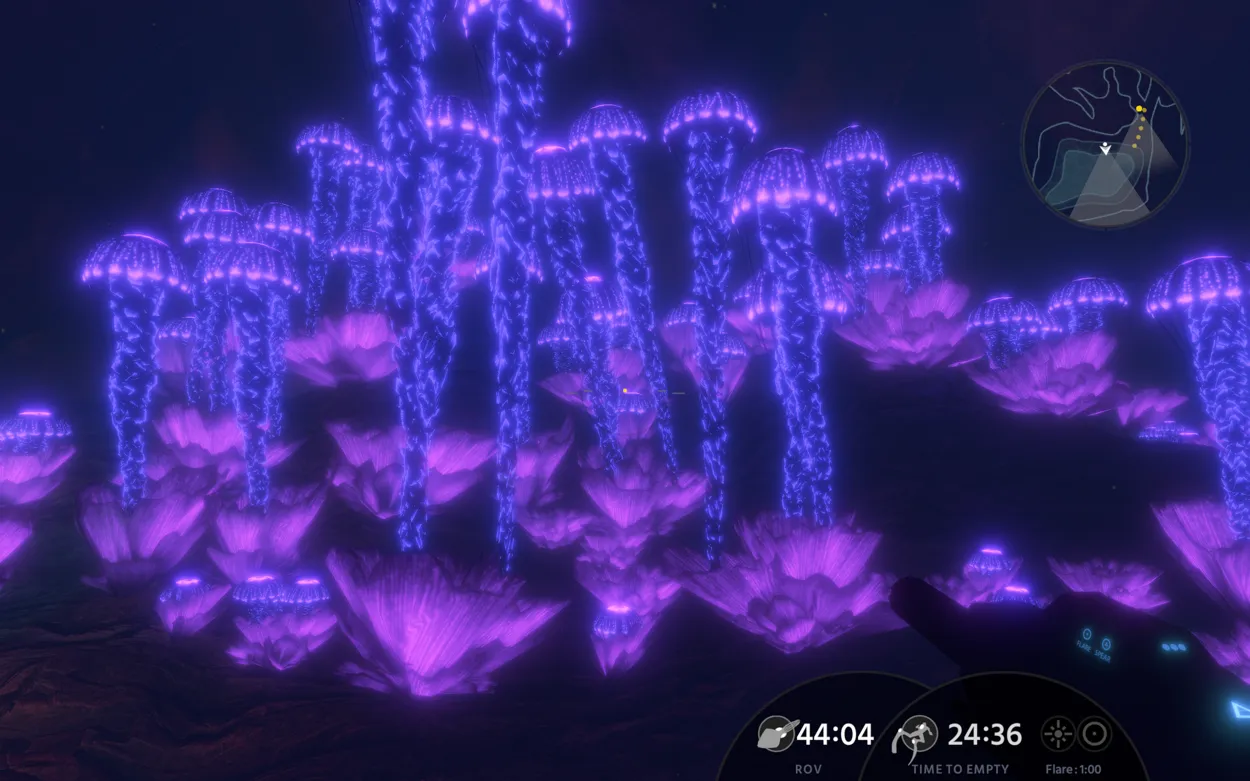 Everyone knows glowing sea creatures are bad news.
Everyone knows glowing sea creatures are bad news.
I hesitate to call this a walking simulator, however, specifically because it does have gameplay. That gameplay is, ultimately, what sinks this game. Early in the game, the player is given a gun and a companion, and with these two tools in hand, is expected to move through the caves, fighting enemies and exploring the mystery of what makes these caves what they are. Mechanically, the gun works by deducting time from the player for each shot; a flare deducts one minute, while a spear deducts three. In theory, this ought to instil a sense of caution in the player, forcing them to think strategically about when to fight and when to run. Indeed, a mechanic like that would further the horror atmosphere, creating a real sense of tension in fights, and making the obstacles that require a fight feel more meaningful when finally encountered.
Instead, the game undermines both its horror atmosphere and its survival mechanics with the addition of a companion dumber than the rocks entombing poor Ryan, thus stripping any real sense of agency or strategy from the player as they scramble to rescue their companion from their own poor decision-making.
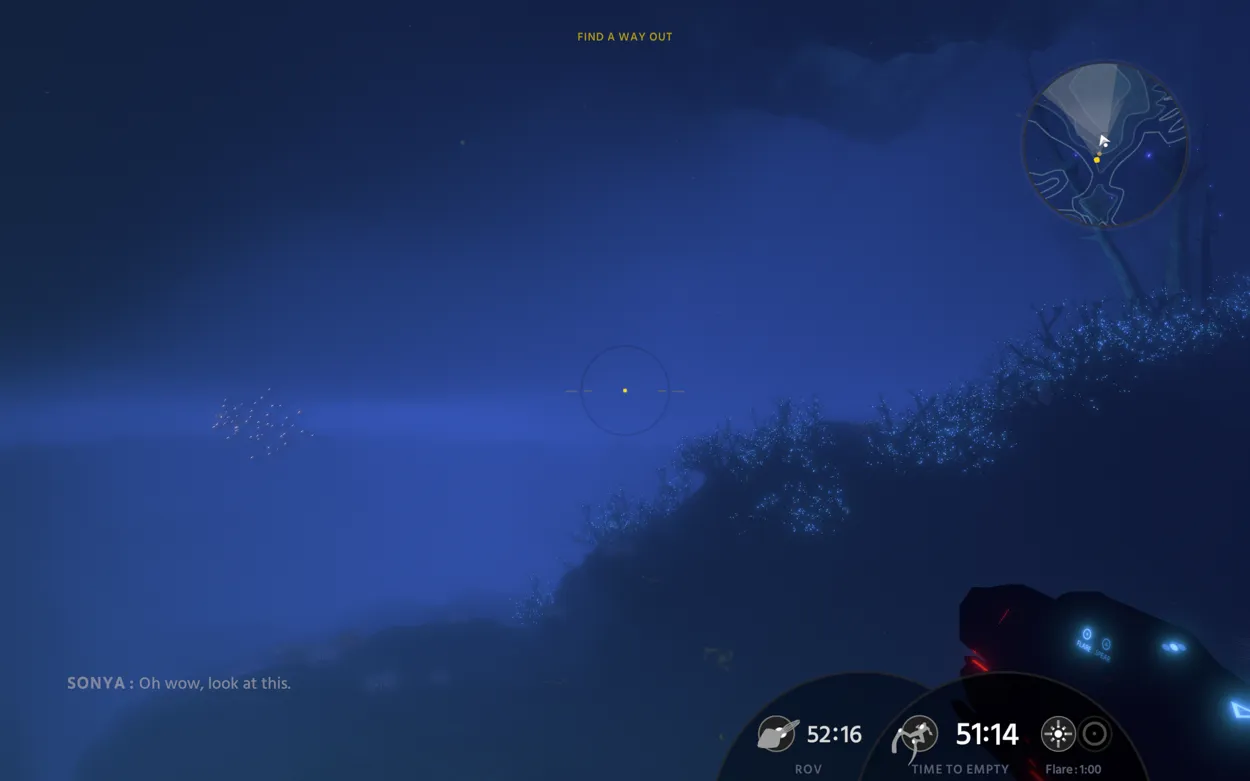 It’s the ocean, Sonya. I’ve seen the ocean before.
It’s the ocean, Sonya. I’ve seen the ocean before.
Part of the game’s tension comes from the finite amount of energy the player’s suit has remaining. When that energy reaches zero, they freeze, drown, get crushed by pressure, or any combination of the above. Refilling that energy bar requires harvesting glowing orange balls with the help of Sonya, an ROV companion. Level design, then, generally consists of an energy grove - usually guarded - a gauntlet of some sort, and then another energy grove.
The game’s mechanics and atmosphere suggest to the player that they should think strategically about how and when to approach the guarded groves. If each shot costs energy, and taking damage costs energy, then the energy gained from the grove should outweigh what’s spent to harvest it. Indeed, the game’s plot also suggests that the player should be thinking critically about how to engage with the groves, as everything suggests the more that’s harvested, the worse the consequences for their health and chance of survival. This is not, however, how the game actually plays. Instead of thinking strategically and skipping groves or sniping at guards from a distance, the ROV companion makes the decisions for the player, barrelling into the middle of a group of guards, then complaining when the player doesn’t immediately rescue it from its predicament. More times than I care to count, I successfully slipped past a guarded grove because I was nearly full on energy, only to get hit notifications because the ROV decided to harvest energy we did not need. Other times, after clearing a grove, the ROV would refuse to fully harvest, leaving me with less energy than when I started. All sense of strategy or agency went out the window, replaced by frustration and a sense that this companion was either willfully stupid, or actively sabotaging me, and knowing neither was actually canonically the case.
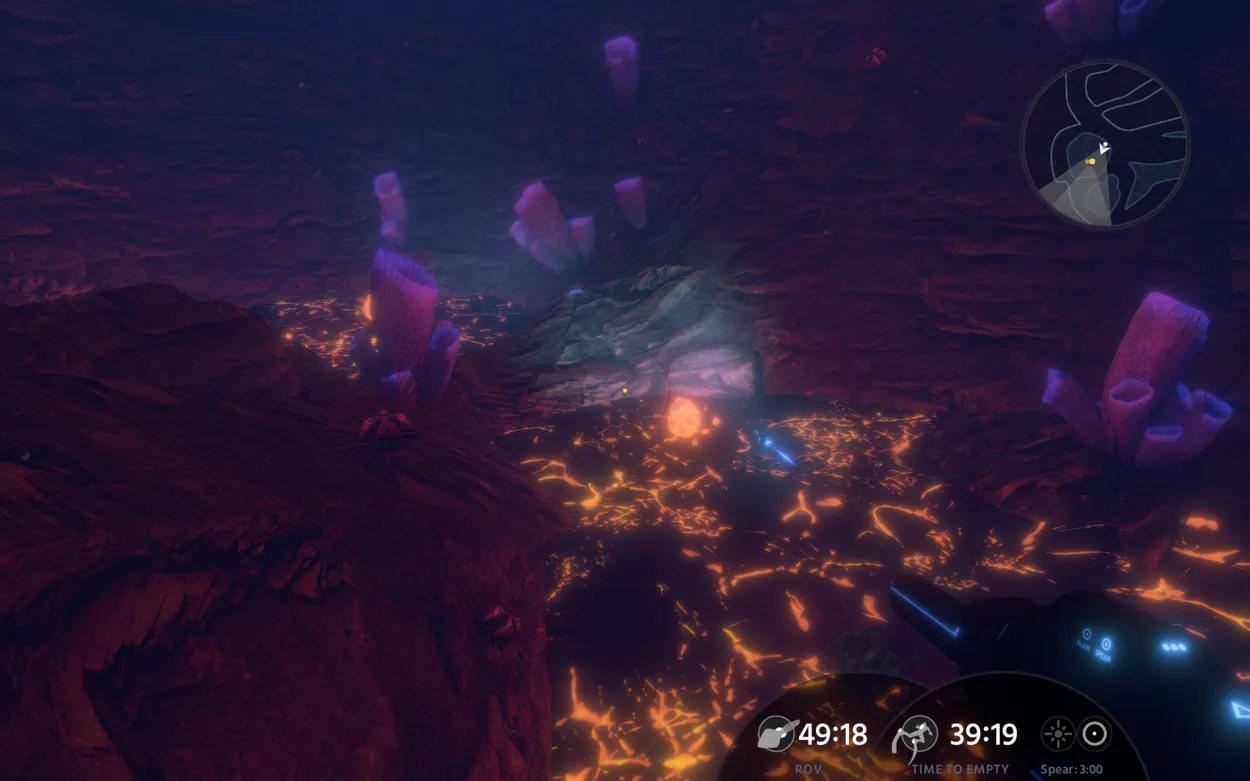 goddammit sonya i’d like to be at full energy
goddammit sonya i’d like to be at full energy
For all the work the visual and sound design do to create a sufficiently intriguing and horrifying atmosphere - and, to be clear, they do a lot of effective work - it’s all undone by the miserable companion mechanics. At each obstacle, I watched to see how the companion would ruin it for me this time, and how many times it would get me killed. Rather than losing myself in the story or the process of exploring this cave, I instead got distracted and frustrated by the ROV and the lack of agency it caused me to have. This was no longer my struggle to survive and understand what was happening around me. It was instead my struggle against this companion’s terrible decision making and bad game design. The game’s mechanics themselves became anti-immersive, and once lost, that immersion was impossible to regain. In horror, immersion is everything , and with that immersion gone, the game was done.
However, calling out the misery of the ROV companion still doesn’t fully capture why this game fundamentally does not work, and why I had such a miserable time with it. Even without considering the companion, the level designs themselves create a poor gameplay experience that is in and of itself immersion breaking. To understand that, it’s important to look back at the level design and the gauntlets themselves.
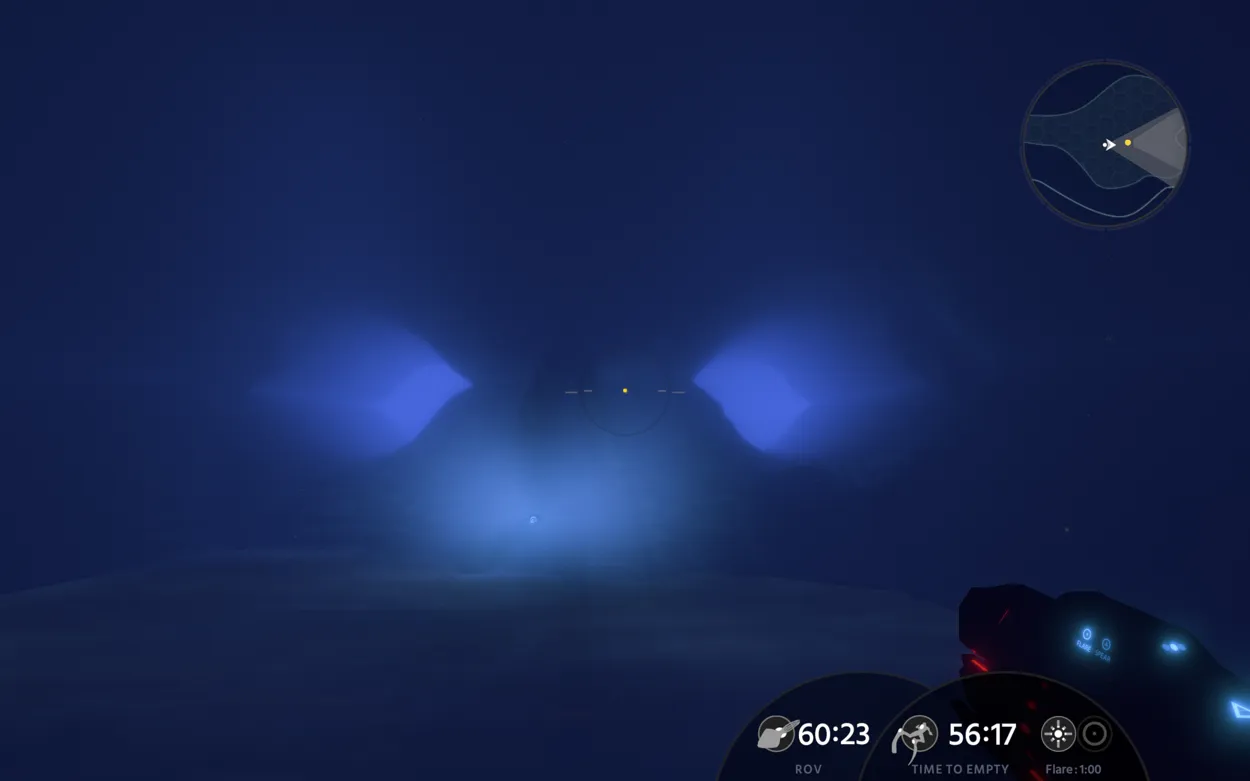 The ocean is glaring at me.
The ocean is glaring at me.
The game’s mechanics are fairly simple. There are the standard four buttons to move, a button to rise, and a button to fall. There is no sprint, no dodge, nothing but moving ever forward. There is nothing inherently wrong with this set-up. It emphasises a certain degree of powerless for the player, leaving them, to a certain extent, to the whims of the ocean and the life around them. It can work well, if the level is built to play into that sense of powerlessness.
Instead, the game’s gauntlets function as obstacle courses, with the player being haphazardly shunted past monster after monster. At some points, it feels less like a level in a video game, and more like a haunted dark ride, complete with spooky, clanking music telling the player how they’re meant to be feeling at that point. At other points, the lack of true control meant that I was running the same gauntlet over and over again, feeling like it was just up to chance as to whether or not I made it.
As an example, one gauntlet features worms that leap up from the floor to attack the player. Firing the gun triggers them early, allowing the player to swim past them. However, the gun’s flare travels faster than the player, meaning the worms could be triggered and reset before the player could safely swim past them. The flare also keeps travelling after the player dies and restarts, making the timing once again nearly impossible to control. What should have been an action set piece instead became an exercise in memorisation and prayer as I struggled to get the timing and slow swim speed to actually line up.
This pattern of things just happening to the player, of scary images and spooky sounds popping up, and the player being expected to deal with them as they come, are not good elements of a horror game. They’re the elements found in a horror game that briefly skimmed the manual, threw some jump scares together, and declared it good enough. The feel of Debris is not that of Iron Lung. It isn’t one that understands the fundamental horror of the depths and uses it to craft an experience. It’s instead the horror philosophy of Ann , of painting the vaguest veneer of horror over an engine and mechanics that are not built to support it, and hoping spookiness is enough to sell it. It is not. The design of Debris is fundamentally counter to the story it’s trying to tell, and it serves to undermine every element of the game.
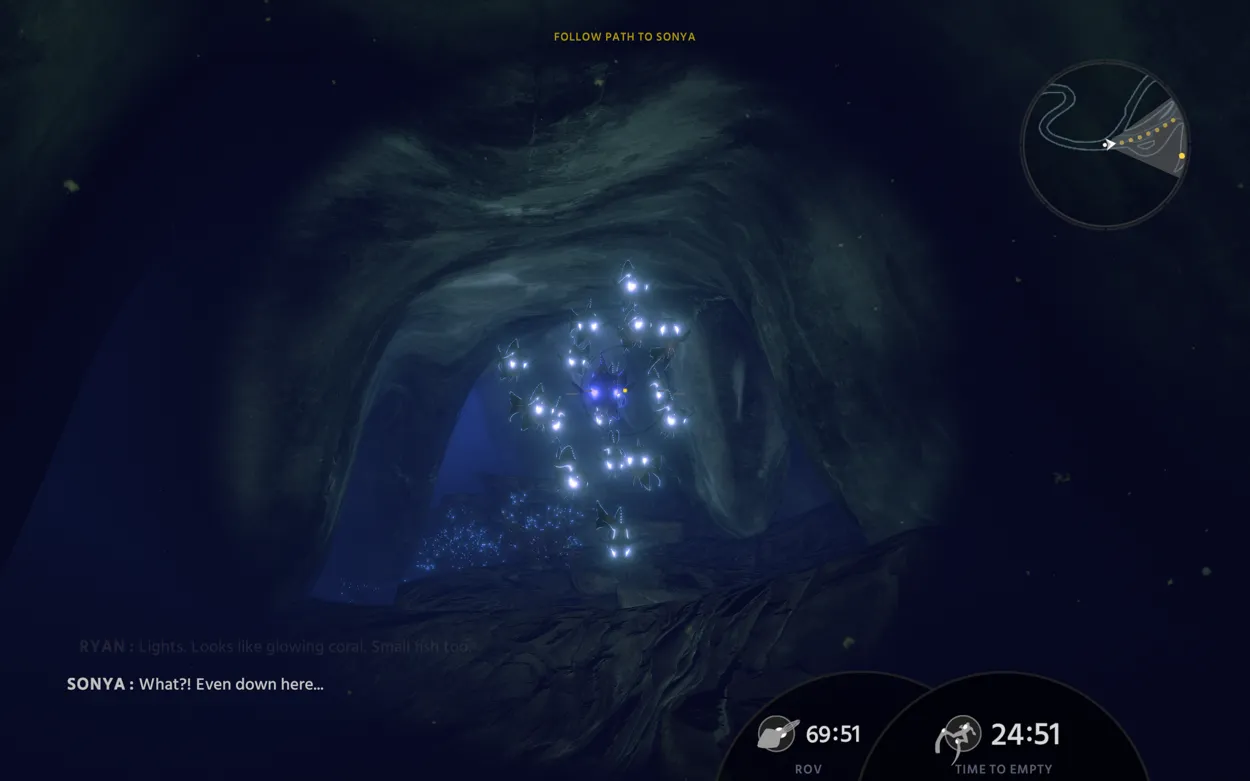 Yes, Sonya, there are fish in the ocean.
Yes, Sonya, there are fish in the ocean.
Debris should have worked. Its visual and sound design are, by and large, excellent, and its story is one that can easily draw a player in. Instead, the game ends up serving as a masterclass in game design that alienates the player. The conspiracy throughout centres around what the activities of the megacorporation have been and whether they can be trusted. I’d argue, however, that this story is sidelined the moment my companion wanders off to pet a fish. The question I have is what I did to the devs to deserve this, and why their game’s design is such an act of self-sabotage.
Developer: Moonray Studios
Genre: Adventure, Horror
Year: 2017
Country: Canada
Language: English
Play Time: 3-4 Hours
Youtube: https://youtu.be/eVogjDOf29k
